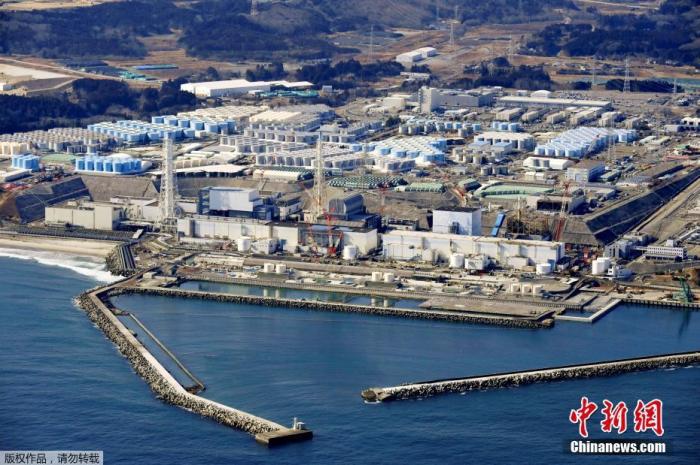China News Service, December 5th. According to Kyodo News on the 5th, Tokyo Electric Power Co., Ltd., in preparation for the discharge of treated water from the Fukushima Daiichi Nuclear Power Plant into the sea, has begun testing a stirring device that prevents deviations in the activity of radioactive materials.
On April 13, the Japanese government officially decided that the nuclear sewage from the Fukushima Daiichi Nuclear Power Plant will be discharged into the sea after being filtered and diluted.
The picture shows the Fukushima Daiichi Nuclear Power Plant in Japan on February 13.
According to reports, according to TEPCO’s plan, before the treated water is discharged, the activity of radioactive materials will be measured in a dedicated storage tank to confirm that the activity of materials other than tritium that cannot be removed by the "Multi-Nuclide Removal Device" (ALPS) is lower than the standard value. .
TEPCO tested the performance of the water mixer installed at the bottom of the storage tank.
According to Tepco, the reagent used as a radioactive substance is put into a measuring tank with a height of about 15 meters, a diameter of about 10 meters, and a capacity of about 1,000 cubic meters.
Nine samples were collected from the upper, middle and lower parts of the tank before and after the start of the mixer to confirm its effect.
TEPCO is evaluating the analysis results and will announce them after the summary.
TEPCO also plans to implement the treatment water cycle test in February next year.
At that time, 10 storage tanks will be connected, 2 pumps will be used to circulate the treated water, and the activity of tritium and cesium removed by ALPS will be analyzed.
The person in charge said: "I hope to confirm whether the uniformity in the storage tank is achieved through circulation and stirring."
The treated water discharge will start around the spring of 2023. The measured treated water will be diluted with seawater to make the tritium activity less than one-fortieth of the standard value, and then discharged through the submarine tunnel about 1 km offshore of the nuclear power plant.
On March 11, 2011, a massive earthquake occurred in the waters near Fukushima Prefecture, Japan.
Affected by this, the cores of units 1 to 3 of the Fukushima Daiichi Nuclear Power Plant melted down, and Tepco continued to inject water into the containment of units 1 to 3 to cool the core and recover sewage.
On April 13, 2021, the Japanese government officially decided to filter and dilute the Fukushima nuclear sewage into the sea. The discharge time is expected to last 20 to 30 years. However, this decision was met by residents of Fukushima Prefecture and the National Fisheries Union of Japan. Strong opposition from the Federation and others.

